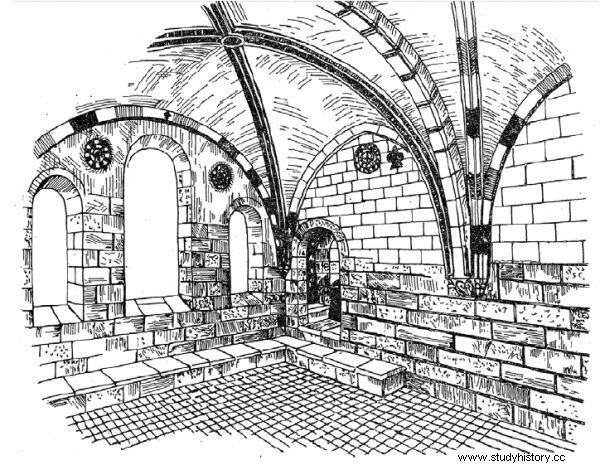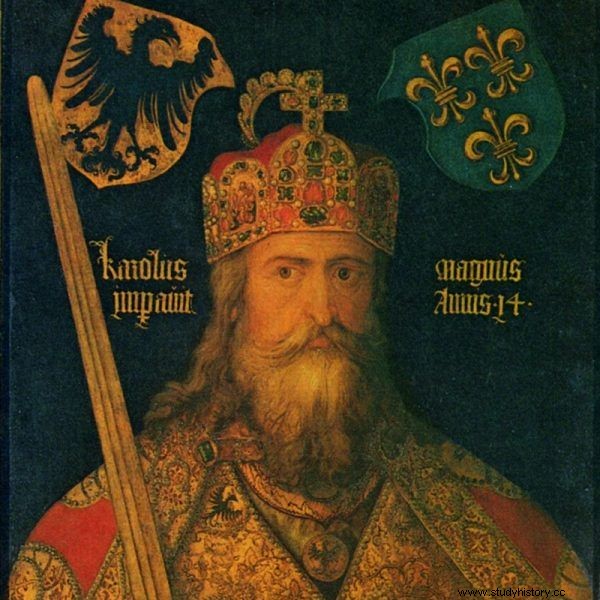It had nothing to do with the Church and piety. But a lot - with the long-deceased founder of the empire, Charlemagne. It was he who, unknowingly, sent tens of imperial relatives to luxurious prisons.
Throughout history, many queens have burst into tears when it turned out that they had given birth to a daughter instead of the long-awaited son. In the next generation, however, things looked completely different. Paradoxically, the princes and their husbands cared about their daughters. And nowhere was this more true than in Germany of the Ludolfing era - that is, in the 10th century.
In this state - or rather an unstable conglomerate of states that were primarily united by a common king - there was only one legitimacy of supreme power. Of course, ancestral merits, family fortune, and personal qualities helped demonstrate government fitness, but they were not the most important. And they were never enough.
There was a conviction among the German elite that only a man with imperial blood circulating in his veins could be a king. And it is in a very narrow sense:the blood of the emperor, that is, the blood of Charlemagne.
One should not be misled by the later nomenclature, led by the Roman Empire of the German Nation. In this era, nothing of the sort existed yet. The Ottonians ruled the Frankish Empire. Of course, they accepted the crown in Rome, at the hands of the popes. They did not do it, however, following the example of the rulers of the Roman Empire dying in the mists, but exactly - following the example of Charles.

More than thirty monasteries intended for imperial relatives were built in Germany. Illustration from Kamil Janicki's book “Iron Ladies. Women who built Poland. ”
It is hard to believe, but this one and only man, two hundred years after his death, determined political arrangements in an area of over a million square kilometers. He was the symbolic source and justification of the emperors' rights to sovereignty over the Christian world.
Who might be a descendant of the great Charles?
It didn't end there. Carolingian blood sanctified power at every level. Ducal families competed in creating legends about their ties to the continent's most important dynasty. In the documents, often more emphasis was placed on the references to kinship with Charlemagne than on the current titles. An appropriate family tree made it easier to gain offices and increased prestige exorbitantly. It gave arguments against competitors and justified acts of aggression against neighbors. It also significantly changed relations with the emperor. A descendant of Charlemagne could talk to the monarch as if he were a relative. He was simply allowed more.
These ideas grew stronger over the years. And with them so did the emperors' resistance to allowing the "spilling" of imperial blood.
It was no coincidence that the Otton daughters were most often assigned to a church career. Only in exceptional cases were they allowed to marry. Even when it happened, the kings were diligently watching the situation for the next generation. In Germany of this period, female monastic communities sprang up like mushrooms after the rain. More than thirty of them were built in the 10th century. And they were the perfect places to place - of course in the role of the superiors' mothers - imperial granddaughters, nieces and other relatives .
The best game
The line of dispute was obvious. The powerful who had succeeded in marrying the ruling house did their best to marry their daughters, making profitable alliances. After all, these women were the best party in all of Western Europe. You could get a lot for them on the matrimonial stock exchange. Meanwhile, the emperors used all means to stop similar relationships. Usually the latter got their way. As a result, in order to become the imperial son-in-law or brother-in-law, one had to consciously surrender the right to conduct one's own marriage policy.

Charlemagne according to Albrecht Dürer.
Whenever there were exceptions to this rule, they were loudly talked about throughout Europe, and men allowed to marry an imperial descendant made sensational careers. This was the case with the Lorraine magnate Ezzon, who unexpectedly married the sister of Emperor Otto III, Matilda. And this is also how the great image achievements of Bolesław the Brave should be interpreted - who obtained the royal crown thanks to the fact that his son, Mieszko II Lambert, married the emperor's niece and the daughter of the aforementioned Matilda, Rycheza.
***
The women who crowned Poland. An uncompromising story about times of decline and moral decay. Striking silhouettes of great scoundrels. And a story that returns the dignity to the most important ladies in the history of the Polish Middle Ages.
Selected bibliography:
The article was based on materials collected by the author during the work on the book "Damy z skazą. The women who crowned Poland " . Some of these items are shown below. Full bibliography in the book.
- Borawska D., The crisis of the early Piast monarchy in the 1330s , Warsaw 2013
- Eckenstein L., Woman under Monasticism. Chapters on Saint-Lore and Convent Life between AD 500 and AD 1500 , Cambridge 1896.
- Fried J., Otto III and Bolesław the Brave. Dedication miniature from the "Gospel Book" from Aachen, the Gniezno convention and the Polish and Hungarian kingdoms , Warsaw 2000.
- Jasiński K., Rycheza, wife of the Polish king Mieszko II , "Herald. History, Genealogy, Heraldry ”, No. 8 (1994).
- Leyser K., Rule and Conflict in an Early Medieval Society. Ottonian Saxony , London 1979.
- Michałowski R., Awareness of the Saxon ruling group in the 10th – 11th centuries. "Nobilis, dives, pauper" - an attempt at a semiotic analysis , "Studia Źródłoznawcze", vol. 19 (1974).
- Pleszczyński A., Germany towards the first Piast monarchy (963–1034). The birth of the stereotype , Lublin 2008.
- Wolfram H., Conrad II, 990-1039. Emperor of Three Kingdoms , University Park 2006.
